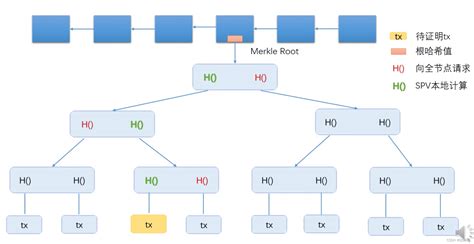比特币区块链是什么意思
Understanding the Structure of Bitcoin Block Headers
Bitcoin's blockchain, the underlying technology behind the cryptocurrency, is a decentralized and distributed ledger system that maintains a record of all transactions conducted using Bitcoin. At the heart of this system lies the block header, a critical component that encapsulates essential information about each block within the blockchain. Let's delve into the structure of Bitcoin block headers to gain a comprehensive understanding.
Block Header Components
A Bitcoin block header consists of several fields, each serving a specific purpose in the functioning and security of the blockchain. These fields include:
1.
Version
: This field indicates the version of the block structure being used. It helps in implementing new features or making changes to the block format in a backwardcompatible manner.2.
Previous Block Hash
: This field contains the cryptographic hash of the preceding block's header. It effectively links each block to its predecessor, forming a chain of blocks, hence the term "blockchain."3.
Merkle Root
: The Merkle root is the hash of all the transactions included in the block. It is derived from a Merkle tree, a data structure that efficiently summarizes all transactions in a way that allows for quick verification of transaction inclusion.4.
Timestamp
: This field records the time of block creation, represented in Unix timestamp format. It helps in maintaining the chronological order of blocks in the blockchain.5.
Difficulty Target
: The difficulty target represents the level of difficulty for miners to find a valid block hash. It adjusts dynamically based on the network's total hashing power to maintain a consistent block generation rate.6.
Nonce
: The nonce is a 32bit (4byte) field that miners adjust to find a hash value meeting the current difficulty target. Miners repeatedly hash the block header with different nonce values until a valid hash is found.
Block Header Structure Example
```plaintext
{
"version": 1,
"previous_block_hash": "00000000000000000008b54279c43a413f561308bbc9b5825aa9f5e3a41794d9",
"merkle_root": "1d2baf836d71b6db6d0bfe9565e81ea2f6a84e08a3a06a4c3b8b9d6a219ca209",
"timestamp": 1619792114,
"difficulty_target": 386872262,
"nonce": 3029122401
}
```
Guidance and Insights
Understanding the structure of Bitcoin block headers is crucial for various stakeholders in the cryptocurrency ecosystem:
1.
Miners
: Miners need to comprehend block headers to efficiently perform the mining process. They adjust the nonce field to find a hash value below the current difficulty target, thus contributing to the security and stability of the Bitcoin network.2.
Developers
: Developers building applications on top of the Bitcoin blockchain must understand block headers to interact with the network effectively. They utilize block headers for tasks such as verifying transactions, querying blockchain data, and implementing custom functionalities.3.
Researchers
: Researchers studying the Bitcoin protocol analyze block headers to gain insights into the network's behavior, performance, and security properties. They may explore trends in block creation times, mining difficulty adjustments, and the propagation of new blocks across the network.4.
Investors and Traders
: Investors and traders in the cryptocurrency market monitor block headers to assess the health and stability of the Bitcoin network. Changes in block creation times, difficulty adjustments, or hashing power distribution can influence market sentiment and trading strategies.In conclusion, a thorough understanding of Bitcoin block headers is essential for anyone involved or interested in the cryptocurrency space. By grasping the significance of each component and its role within the blockchain ecosystem, stakeholders can navigate the complexities of Bitcoin with confidence and insight.











